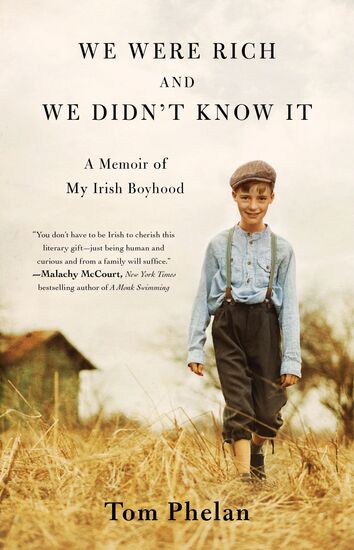Page Turner / Edited by Peter McDermott
They celebrated in the streets of Tralee when the Truce came into effect 100 years ago on this Sunday.
Not long after July 11, 1921, the intelligence officer for Kerry Brigade No. 1, IRA, made a visit to the commander of the East Lancashire regiment at Ballymullen barracks in his new position as liaison officer on behalf of the county’s three brigades. Tadhg Kennedy also had a rather more public role as the accountant for Kerry County Council and would occasionally have a drink with Col. Barkley in the Grand Hotel, Tralee. In his book “War in the West 1918-1923,” Noel Ó Murchú describes the moment when the two met at the barracks.
“‘Good Christ!’ the colonel said and then reached out to shake Kennedy’s hand. ‘I hand it to you people,’ he remarked. ‘You’re the last man in the world I’d suspect.’”
“It details the story of the War of Independence centered in one particular area, the Dingle peninsula,” Ó Murchú told the Echo of his book. “It details the many events that occurred on the peninsula, includes hand-drawn maps, eyewitness reports and names the individuals involved. It also explores the influence individuals and events on the peninsula had on the national picture and explores the bitter schism between some of these individuals and GHQ, a schism that led to rancor and brutality in the ensuing Civil War.”
The peninsula had two battalions of the brigade’s seven and Ó Murchú
assesses their position by July 1921: “It is hard to envisage how much longer the Volunteers could have carried the fight to the Crown forces with such a scarcity of resources.”
A little later, he adds, “However, if the aim of the War of Independence had been to make the country ungovernable, and then use international pressure to force Britain to concede independence to Ireland, in this they certainly succeeded. West Kerry for its part could have been held up as a template to the rest of the country on how to carry these aims through.”
The British had been mulling their options in the lead-up to the summer. “One was to fight an all-out war in the south of Ireland and plans existed to start this phase by 14 July,” O Murchu writes.
On the Dingle Peninsula, the IRA had been “expecting a big comb-out,” but the counter-offensive never came.
British Commander in Chief General Nevil Macready reckoned the “more people are killed the more difficult a final solution becomes.” Several key officials at Dublin Castle agreed, and influential strands of opinion in Britain were also in favor of a negotiated settlement.
Kerry was well-informed not least because of Dingle native Kennedy, who was considered just about the ablest local intelligence officer in the country. During negotiations Michael Collins entrusted him with a spying mission, the outcome of which seemed to confirm for Collins that the British were readying to restart and escalate if the talks broke down.
West Cork flying column commander Tom Barry once said the “only thing that Kerry did in the War of Independence was to shoot a decent police inspector and his colleague at the Listowel races.”
That Barry was referring to his fellow anti-Treatyites of 1922-3, as they mostly were in the county, shows just how deeply rooted was the idea of Kerry inaction in 1919-1921; Ó Murchú attempts to explain how it originated and shows it to be a myth.
One killing of a policeman, that of Paddy Foley, a vacationing Galway-based RIC recruit from Dingle, who was a friend and relative of Kennedy’s, is examined in detail. Other revealing episodes are the shooting dead of Kennedy’s brother in a reprisal action; the subsequent shooting in IRA custody of a Black and Tan named Godfrey Jasper, which the intelligence officer tried to prevent and later ensured that his wife and family back in Shropshire got their full entitlements; and one that intrigues Ó Murchú, as he grew up very close to where it happened, the July 6, 1921, assassination of Captain John Cameron of the Coastguards, which greatly upset local civilians.
When the Treaty was signed and ratified, the commanding officer of the 5th Battalion, Michael Moriarty, backed the Free State and joined its army, while the other Dingle O/C, Tadhg Brosnan of the 4th, stayed with the local IRA majority. Tadhg Kennedy remained neutral, disappointed with the Treaty but probably agreeing with Collins’s assessment of the military situation vis a vis Britain.
In the Civil War nationally, the government’s forces suffered significantly higher casualties than their defeated opponents; in Kerry, the sides were virtually even — the IRA lost 73 dead, the National Army 72 (and 12 civilians died). That’s been largely attributed to Major-General Paddy Daly, aka O’Daly, previously the leader of Collins’s Squad, who was ruthlessly brutal in dealing with republican opposition in the Southwest.
“Nobody had asked me to take kid-gloves to Kerry,” he said. “So I didn’t.”
ÓMurchú writes, “We can be grateful for the work done by several bodies in the 1930s and ‘40s who gathered and documented this information, leaving us a century later, with a comprehensive picture of what took place during those turbulent times.”
History Ireland magazine described the book as an “impressive compilation”, while prominent historian Diarmuid Ferriter said it had “an extraordinary level of detail” and added that is “hugely valuable.”

Noel O Murchú
Date of birth: Dec. 15, 1960
Place of birth: Dingle, Co. Kerry
Spouse: Mary Martin
Residence: Firies, Co. Kerry
Published Works: “Beatha agus Bás Tomás Ruiséal/The life and Death of Thomas Russell”; “War in the West: The Struggle for Irish Independence on the Dingle Peninsula.”
What is your latest book about?
My latest book is “War in the West.” It details the story of the War of Independence centred in one particular area, the Dingle peninsula. It details the many events that occurred on the peninsula, includes hand-drawn maps, eyewitness reports and names the individuals involved. It also explores the influence individuals and events on the peninsula had on the national picture and explores the bitter schism between some of these individuals and GHQ, a schism that led to rancour and brutality in the ensuing Civil War.
What is your writing routine? Are there ideal conditions?
A lot of my work is research so my routine would be to explore a particular incident, try to investigate it from as many angles as possible and try to picture in my own mind what happened. I find that with this approach, when the time comes to start writing, the words begin to flow.
What advice do you have for aspiring writers?
Keep an open mind, do your research, be prepared to accept criticism, be ready for repetition and enjoy the experience!
Name three books that are memorable in terms of your reading pleasure:
For factual books, “Micheal Collins: The Man and the Revolution” by Anne Dolan and William Murphy; “De Valera: Long Fellow, Long Shadow” by Tim Pat Coogan and “The Civil War in Kerry” by Tom Doyle.
For relaxation, books by authors like Micheal Connelly and John Grisham, Irish authors like Joseph O’Connor and our own John B. Keane. I also enjoy books about people and places, for example books about the Blasket islands and books by local authors like Carl O’Flaherty and John O’Connor.
What book are you currently reading?
“The Knave of Trumps: The Life and Times of Count James Louis Rice of Dingle 1730-1801” by Pat Nelligan.
Is there a book you wish you had written?
About half the books I have read.
If you could meet one author living or dead, who would it be?
UCD historian and writer Diarmuid Ferriter.
What book changed your life?
It would be safe to say that the book that changed my life was my first book, Beatha agus Bás Thomás Ruiséal/The Life and Death of Thomás Ruiséal. Thomás was my granduncle and he was killed by Crown forces in Carrigaholt, Co. Clare in March 1918. It was through curiosity more than anything that I started to look into the circumstances of his death around 2014/15 and the more I looked the more information I discovered, leading me to the decision that his story deserved to be put out there and leading to me publishing my first book. The sources of information I discovered and the amount of information contained within them convinced me that there was more than enough material available to do an in-depth study of the War of Independence in my home area and here we are today, with a 300-page book and much material that has up to now lain undiscovered and forgotten.
What is your favourite spot in Ireland?
Leaving aside my home area, I don’t have to travel far to find a spot that I keep being drawn back to and where every time I have a break there I return refreshed in body and in spirit. That spot is Derrynane, on the Ring of Kerry. The vista presented to me whenever I drive over the pass of Coumakista, with Abbey Island, Bealtra Harbour and Derrynane Beach and Park stretched out before me has to be one of the most beautiful in the world.
You’re Irish if....?
You’re having the craic following the GAA!








